How To Sell Online in 2024: A Beginner’s Guide
If you click to purchase a product or service based on our independent recommendations and impartial reviews, we may receive a commission. Learn more
So you want to know how to sell online? A lot of time and behind-the-scenes work goes into the process, and I’m here to walk you through it step-by-step, from choosing the right ecommerce website builder to promoting your products.
Whether you’ve already got products ready to sell and don’t know where to start, or you’re not even sure what to sell or where to sell online, this guide is for you.
#1. Set Your Business Goals
Before you can start selling online, you need to set your business goals. Having a plan in place will prevent you from making impulse or rash decisions that could end up impacting your business.
Think about your long-term vision and aims when it comes to selling:
- What are you trying to achieve with your business? It’s important to determine your site’s purpose and goals, whether you’re looking to sell a certain number of products each month, focus on building an engaged customer base, or generate brand awareness
- Do you have a niche? If you’re looking to sell to a particular crowd (e.g. pet supplies to pet owners) then you should recognize where your business sits within your niche to help your website stand out
- Who are you selling to? Figure out your target audience and understand the buying habits of your customers to help shape your business, products, and marketing strategy
- What are your competitors doing in the market? Identify product or service gaps through market research and learn from your competitors – look at what works and what’s missing (this applies to their inventory, website, and marketing)
I recommend having all of these questions answered before you get started, but it’s important to be open to adapting as your business grows and evolves. You know your business and products better than anyone else, and you’ll come to understand your customers more once you get a few sales under your belt.

#2. Build Your Inventory
Of course, you need something to sell, so the next step is to build your inventory. What you sell can come in many shapes and forms, such as physical products, digital items, online courses, or services. Whether or not you’ve got products in mind, you must understand the demand and what already exists in the market.
You want your product to provide a solution or benefit a customer’s life in some way – and it’s a bonus if you can offer a superior or more affordable product than your competitors too!
If you’re struggling for ideas, you can find trending products to sell by using platforms like Google Trends or user-powered forums like Reddit.
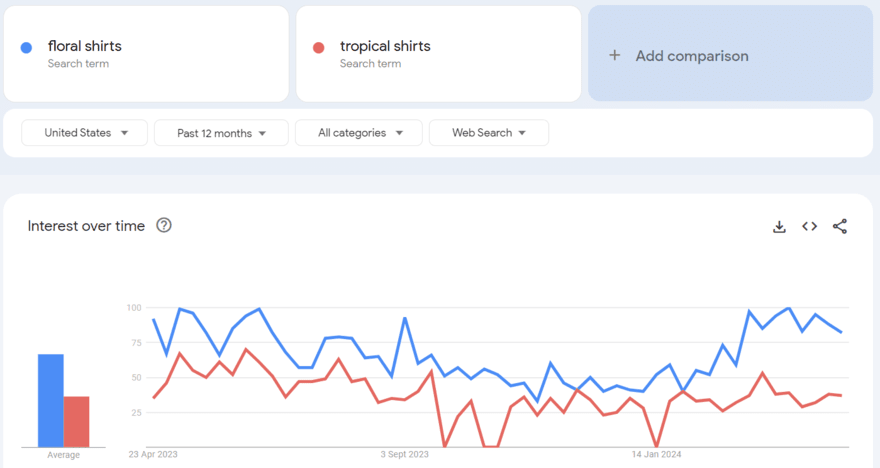
Product Pricing
Once you’ve sorted out your products, you can set your business margin. Take note of your production costs if you’re creating the products yourself or purchasing them elsewhere – outsourcing work and delivery fees all add up! You’ll subtract this production cost from the price you’re charging customers, and that’s your margin.
When setting your product prices, consider your margin and check competitor pricing for similar products. A high-profit margin means the production costs are much lower than what you’re selling your products for. However, you don’t want to scare away customers with extreme prices! Find a middle ground that works for both your business and customer base.
Product Descriptions
Another important element to consider is product descriptions. These are critical for search engines to help scan product pages and show relevant results to shoppers. They also help customers understand how the product can benefit them and why they should buy it.
What to include:
✔️ The benefits and features of each product so customers get all of the information while hearing how it could impact their lives in a positive way
✔️ Customer-led copy, meaning you write for them and speak to their needs and pain points
✔️ Social proof from other customers to build brand trust – you can easily add testimonials and reviews through your website builder
✔️ Your brand’s tone of voice should be present in your product descriptions for consistency
What to avoid:
❌ Repetition and copied text, especially if you’re selling products from a manufacturer or wholesaler
❌ Clichés or sales language – this can come across as fake or robotic, and customers value genuine interactions
❌ Changing your tone or writing style between product descriptions – customers will be confused if one product description is serious while another is casual or silly
❌ Incorrect information – don’t mislead your customers by selling a product that doesn’t match its product description
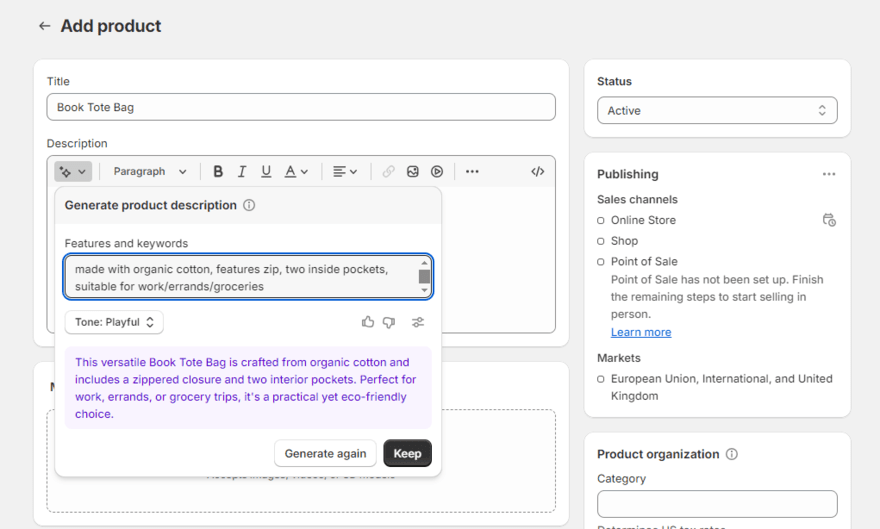
#3. Create an Online Store
While you can sell across marketplaces or through social media platforms, I recommend using a website builder to sell online. Your website can be open 24 hours a day, seven days a week – building an online store gives you greater flexibility and more opportunities to sell products to customers.
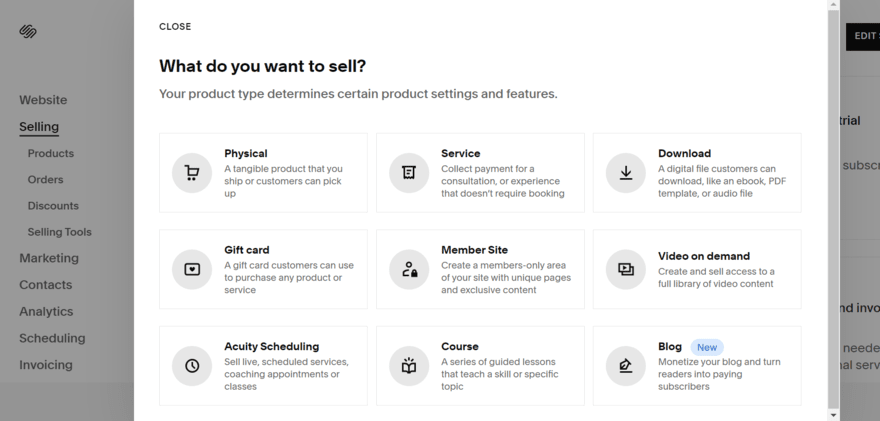
The perk of selling online with a website builder is that the platform will come with important sales features and support, such as abandoned cart recovery, mobile optimization, marketing tools, and security. You can also personalize your site to suit your brand, rather than having a generic storefront created for you when using marketplaces like Etsy or Amazon.
From our recent round of testing, our top-rated ecommerce website builders for 2024 are:
Best Ecommerce Website Builders
- Shopify – Best for selling physical products
- Wix – Best for selling digital products
- Squarespace – Best for selling services
- GoDaddy – Best for selling locally
Shopify is the best ecommerce website builder overall, offering unparalleled sales features, such as customizable checkouts, and the ability to scale with your business. When testing Shopify myself, I found it a little difficult to design my website with its section-style editor, but it was straightforward to add products and manage the inventory backend.
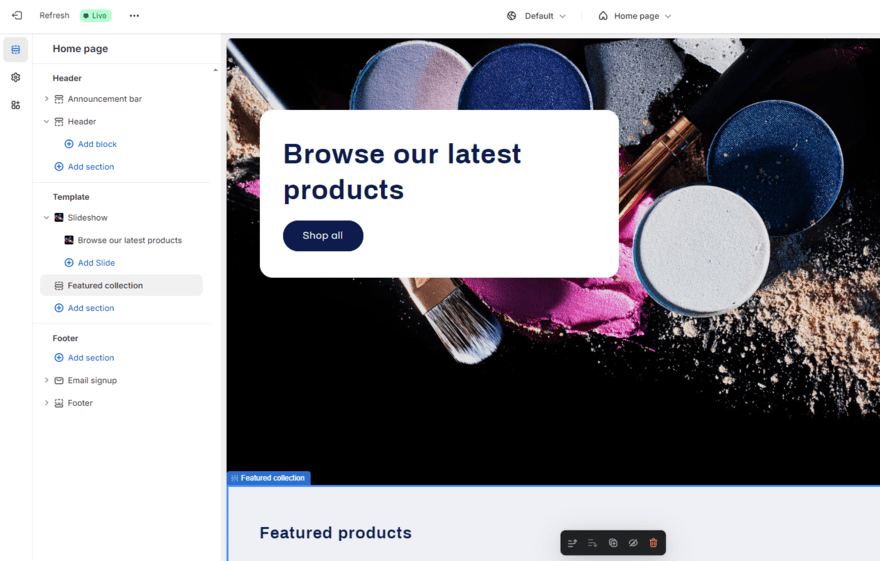
If you’re looking for something more user-friendly, Squarespace is the easiest builder I’ve used. Its drag-and-drop editor and intuitive interface are great for building an online store. Plus, Squarespace is ideal if you’re looking to sell services and take bookings thanks to its Acuity Scheduling tool.
You can compare these titans of ecommerce in our table below, and click through to their review pages if you want a closer look at each builder:
| Shopify | Wix | Squarespace | GoDaddy |
| Overall rating 4.8 | Overall rating 4.8 | Overall rating 4.7 | Overall rating 4.2 |
| Starting Price $29 | Starting Price | Starting Price | Starting Price $20.99 |
| Free plan or free trial | Free plan or free trial Free plan | Free plan or free trial 14-day free trial | Free plan or free trial Free plan |
| Number of templates 200+ | Number of templates 900+ | Number of templates 150+ | Number of templates 100+ |
If you’re still not sure which website builder is right for you, take our quick quiz to get a personalized recommendation based on your business needs:
Setting Up Your Store: A Quick Guide
No matter which website builder you choose, you can start creating your online store by adding your products and building your website pages, such as a contact page. Make sure the customer journey is smooth from start to finish – this means optimizing your content and personalizing the experience to suit your customers’ needs.
While the exact way you set up your online store will vary depending on the website builder you use, the basic steps below will remain the same:
#1. Choose a domain name
- We’ve thoroughly covered choosing a domain name, but some key things to remember are that it should be short, niche, and keep your target audience in mind.
#2. Pick a suitable template
- There are certain criteria that should be prioritized for all ecommerce stores, such as maintaining user friendly navigation and an efficient checkout to encourage sales. But beyond that, you should look for templates that include additional website pages that would compliment your brand. For example, you may want a template with a strong blog layout if your customers would appreciate a personal touch or product updates. Or, if you’re selling something visual like artwork, you’ll need to find a template that has creative visual elements.
#3. Add your products
- You’ll need to add your inventory to your store so that you can start selling. For each item, upload clear product photos, an accurate product description, pricing, and any other information that would be helpful to your buyer, like weight, materials, and care. It’s also important to think about how your customers will locate the items on your site, so create logical categories to organize your products.
#4. Customize your design
- The stylistic tweaks you make should keep in mind your brand’s identity, tone of voice, and customers. For example, if you’re selling pet toys, you might choose a bright color palette that accentuates the playful nature of your products, whereas a more traditional ecommerce business, like an electrical goods store, would use white space and clear fonts.
Check out our guide to building an online store for an in-depth guide of what’s involved.
Can You Sell Online for Free?
Are you looking to limit your expenses? Selling online can result in many outgoing costs – creating or buying products, website and software fees, domain names, it all adds up. The good news is that you can sell online for free. Free ecommerce platforms like Square Online include ecommerce functionality with its free plan. However, the free plan imposes some limitations, such as ads on your website, and you can’t add a custom domain name, which isn’t ideal for a business.
Other builders, like Shopify or Squarespace, offer a free trial to try things out but you’ll need to pay for a premium plan to start selling.
#4. Establish Sales Channels
It’s good to get your products seen by as many people as possible. That means selling across multiple channels in addition to your website, such as online marketplaces like Etsy or eBay, and social media platforms like Facebook or Instagram.
Certain sales platforms favor different types of content, so you’ll need to research the platforms you’re selling on and adapt your content to fit. For instance, when growing your business on social media, visual platforms like Instagram and TikTok are suitable for both pictures and short, attention grabbing videos, whereas Etsy and Pinterest are designed for high quality images.
Similarly, algorithms change between marketplaces. Optimizing your listings for Amazon will involve Amazon SEO, which differs from the set of practices for selling on Facebook Marketplace. Familiarize yourself with the algorithms of the platforms you want to sell on to give your products the best chance of ranking well.
If you’ve already subscribed to a website builder, you won’t need to lose much time setting up additional accounts and listing products across platforms. Most builders, including Shopify, integrate seamlessly with other sales channels, allowing you to sync your inventory no matter where you’re selling.
Here are some tips to sell successfully on multiple platforms:
- Stay consistent with your brand voice: while you should adapt your content style to fit each platform, your brand identity should always maintain consistency. This will make your brand memorable, recognisable, and trustworthy to potential customers who come across your online content.
- Choose sales channels that are relevant for your audience: it’s no use putting your time and effort into nurturing a sales platform that your target audience won’t be using. Think of the age and personality of the customers you’re trying to attract; an embroidery business popular with elderly customers would be better suited to Etsy than TikTok Shop because of the age demographics for that app.
- Research your competitors: keeping tabs on sites with a similar target audience to you will help you to understand which platforms and styles of content your audience will be most receptive to.
- Focus on quality over quantity: to build a strong social presence, your posts need to be frequent and high quality. You won’t have the time to achieve this if you spread yourself too thin. If you’re just starting out or you have a small and busy team, it’s a good idea to focus your time on one or two sales platforms, and increase them as things become more manageable.
- Utilize influencer marketing: influencers can help promote your products on social media channels by introducing them to their audience. Influencers can drive your sales dramatically when picked carefully, which is why it’s important to create a focused influencer marketing strategy.
While having a website or online store is essential in today’s world, I don’t recommend relying solely on one single channel. It’s always a good idea to meet your audience where they are – whether that’s Amazon or TikTok, you want to make it as easy as possible for a large number of people to engage with your business. Building a good presence across multiple channels is a great way to strengthen your brand, build recognition, and even boost sales, without relying purely on SEO for traffic. Integrating socials and marketplaces with your website can really help your marketing efforts, as long as you pick channels that your target audience are using.

#5. Accept Payments
To sell online, your website must be set up to accept payments so customers can shop with your business easily. Most website builders accept all major debit and credit cards and providers like Apple Pay or PayPal. Alternatively, you can use a built-in payment processor, such as Shopify Payments or Wix Payments, to authorize transactions.
If you activate your website builder’s payment gateway (if available), you’ll usually benefit from reduced or non-existent transaction fees. This is another useful way to save on costs when selling online.

#6. Determine Shipping Methods
Sure, you have products to sell online, but how will customers receive their orders? Part of selling is thinking about the whole journey, from product creation to the customer’s experience of opening the product for the first time.
You’ll need to consider couriers, labeling, packaging, and regulations. For domestic packages, shipping products is a little easier and cheaper. Some website builders, like Wix, let you tweak your shipping options in each region – for example, you could offer customers free shipping or a rate by weight. Shopify also provides these features while committing to sustainability by offering carbon-neutral shipping through its Planet app.
If you’re selling internationally, there are a few additional steps and costs to cover when going through customs.
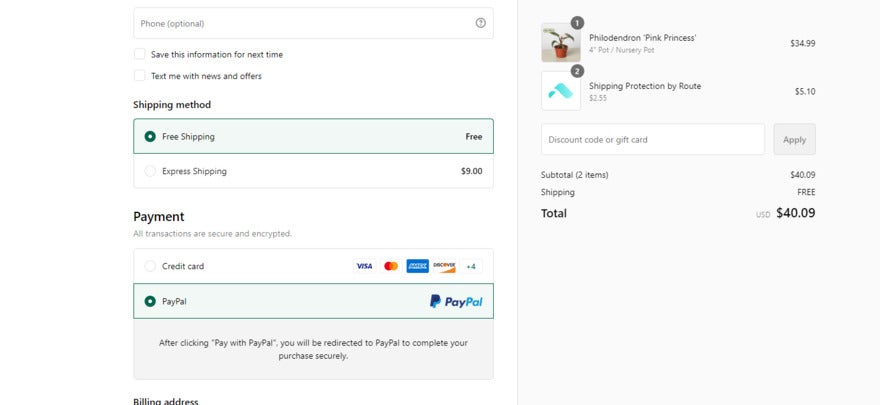
#7. Promote Your Products
It’s time to attract customers and promote your products – you can’t make sales if people don’t know your products exist! As we’ve already discussed, you should have a clear idea of what your target audience looks like and how they behave when shopping, so keep this in mind when marketing your business.
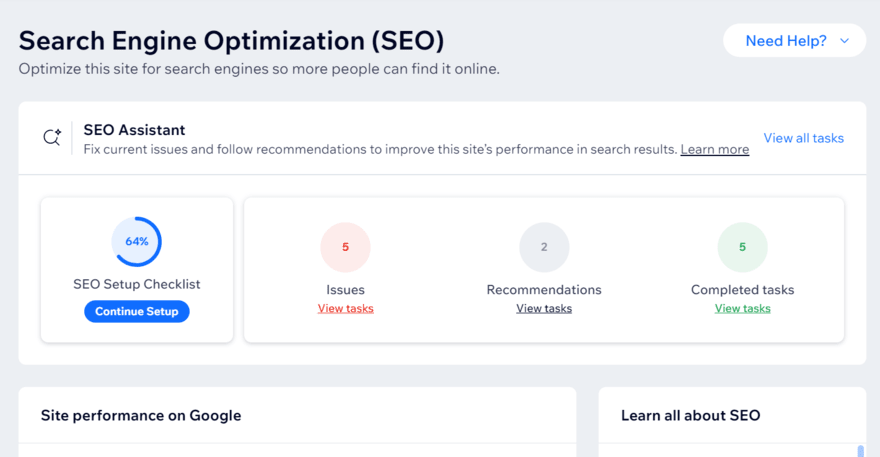
I recommend the following methods to help spread the word:
- Social media – customers are already browsing, shopping, and engaging with content on social media, so it’s a good idea to create posts, share product links, and set up ads on these channels
- Search engine optimization (SEO) – you should fully optimize your site for SEO purposes, but remember to keep your content aligned with what you’re selling to attract the right customers (e.g. don’t use random keywords!)
- Email marketing – a good ecommerce email marketing strategy will help you deliver key messages to customers about sales, products, and store updates, or remind them about your brand with retargeting campaigns
- Blogging – showcasing expertise in your niche and sharing product tutorials or updates can easily transform readers into customers, especially if you guide them to your store or product pages
- Set up deals & promotions – sharing special discounts or offers is a great way to revive interest in your store, improve customer relationships, and encourage sales
- Prep for the holidays – prepare your store and inventory for big holidays and shopping periods (such as Black Friday or Christmas) to catch eager-to-shop customers, through holiday marketing and seasonal deals
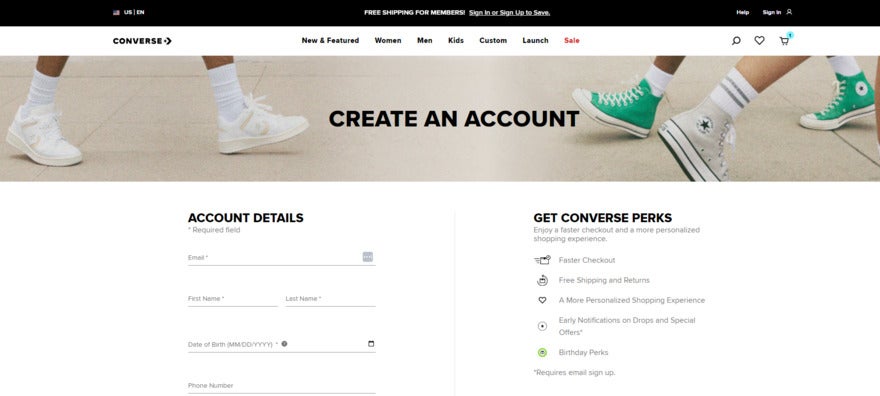
#8. Online Store Maintenance
The work isn’t over when a customer completes their purchase. Not only should you regularly audit your online store to make meaningful improvements (such as updating the navigation to be more user-friendly), but you should also check in with your customers to hear about their buying experience.
If you’re selling online, customer feedback is important – good and bad. Gathering positive reviews and comments will inspire other customers to shop with your business. This can easily be achieved by asking customers for reviews with a survey or a nudge through email after a purchase has been made.
On the flip side, receiving constructive or negative reviews can also be extremely beneficial for your business – even if they’re not always the most fun to read. Knowing what customers dislike about your products can help shape future website updates, resulting in happier customers long-term.

How To Sell Online: Our Expert Tips
Our step-by-step guide has walked you through how to sell online, from determining your target audience and what products you want to sell, to setting up shipping methods and promoting your products to customers.
You can sell on a marketplace, like Amazon, or social media channels, but building an online store will give you full control over your storefront and products. Plus, ecommerce website builders make the process easy nowadays thanks to their beginner-friendly editors, powerful sales features, AI tools, and built-in marketing support.





31 comments